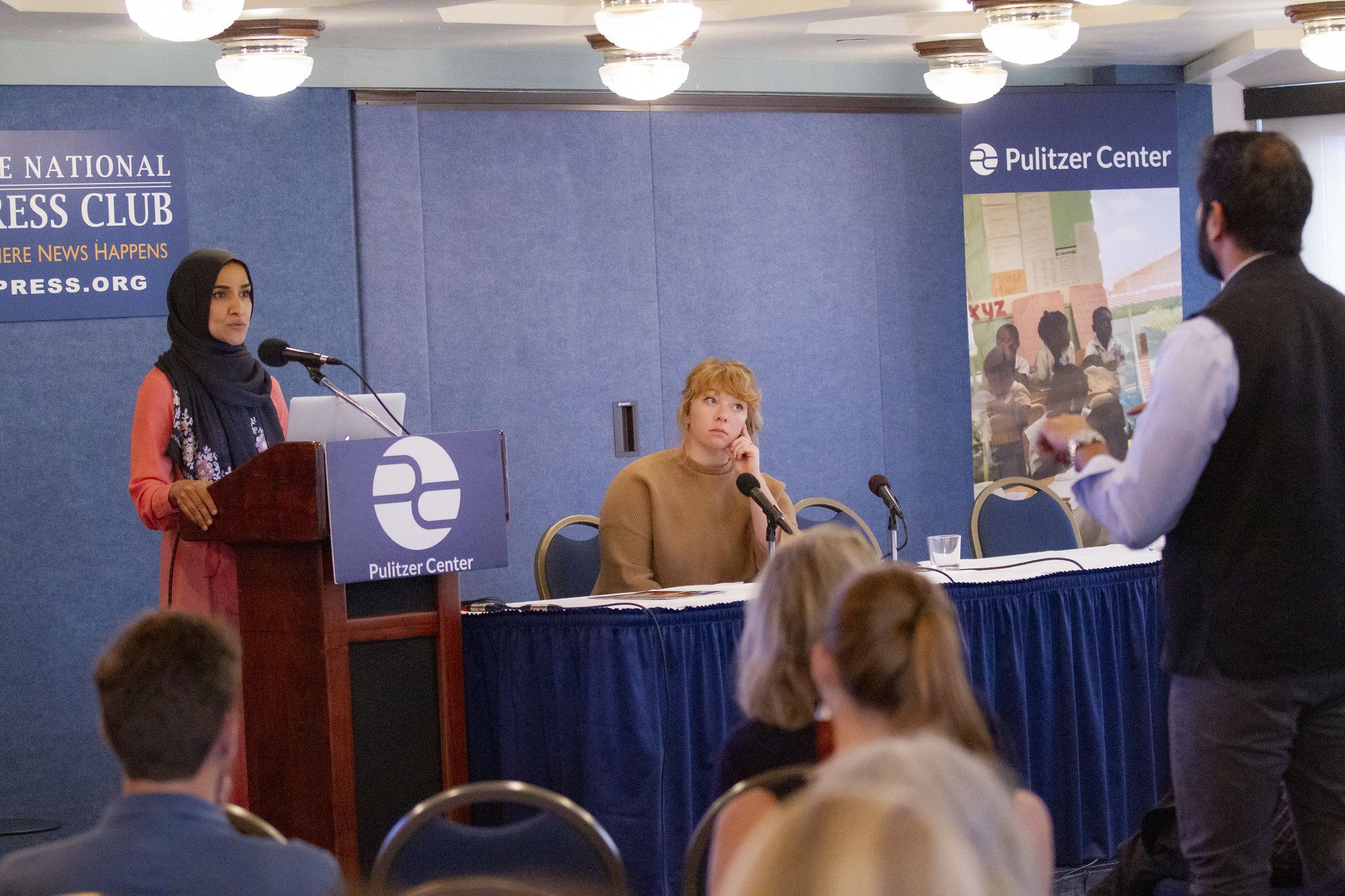“There has never been an America without Islam and Muslims, from early explorers to enslaved Africans to immigrants from around the world,” Dalia Mogahed, director of research at the Institute for Social Policy and Understanding (ISPU), said during a workshop on "Covering American Muslim Communities Creatively and Confidently." Mogahed is the author of the Institute’s "American Muslim Poll 2019: Full Report."
The workshop, co-facilitated by ISPU director of communications Katherine Coplen, closed out the Pulitzer Center’s Beyond Religion conference on Sunday, June 9, 2019, with data-driven, actionable insights for journalists and conscientious news audiences when it comes to producing and consuming stories about Muslim communities.
The American Muslim Poll addresses a gaping deficit in popular knowledge: About 50 percent of Americans say they don’t know a Muslim in real life, leaving half the country to rely on the media to understand approximately 3.5 million of their compatriots, and 1.8 billion people around the world. The problem is intensified, Mogahed explains, by the fact that studies show up to 80 percent of U.S. news coverage of Islam and Muslims is negative. By disseminating key findings about self-reported American Muslims’ demographics, attitudes, and behaviors and comparing them with those of other religious groups, the ISPU aims to enable a more accurate and nuanced understanding of the incredibly diverse Muslim community.
Fact-based, representative journalism is an aim in itself, but the implications are larger. Mogahed argues that media portrayal affects public support for large scale policies such as the recent Muslim ban, as well as everyday interactions; ISPU’s research has found that 42 percent of Muslim families say their child has been bullied due to their religion, more than any other religious group. The ubiquity of narratives centering Islamic extremism, terrorism, and the abuse of women is actively destructive, and also takes up space that could be used to highlight stories that would uplift Muslim communities and shine a light on problems that often go undiscussed.
Mogahed’s research evinces the problem in U.S. perception and media coverage, but not without proposing solutions. So how does she suggest journalists cover American Muslim communities?
First, she urges reporters to move beyond the framework of national security and tell stories as varied as the community itself, which is the most ethnically diverse religious group in the country, as well as the youngest.
When covering religion, she asks that they accurately represent Islamic attitudes, understanding that data does not suggest Muslims to be more religious than any other faith group, nor does it indicate that women feel oppressed by their religion; instead, says Mogahed, “American Muslim women overwhelmingly see their faith as an asset in their lives and instead see racism and Islamophobia as their biggest challenges.”
In addition to covering religion more sensitively, Mogahed recommends that journalists consider what factors beyond religion and culture influence the lives and actions of Muslim people. As a positive example of media coverage, she cites a news story that explored the roots of ideological violence by comparing a terrorist attack by a Muslim man with that of a white supremacist–investigating the common underlying causes rather than over-emphasizing the role of religious extremism.
The language stories use, she notes, is paramount; dubbing a case of abuse an “honor crime” when, were the perpetrator from a different religious background, it would be called “domestic violence,” suggests that abuse is endemic to the Muslim community rather than the human race.
During the Q&A, journalist attendees voiced similar concerns. Pulitzer Center grantee Amy Yee commented that many reporters “put a huge amount of effort into nuance, and then often that can be eradicated with an editor or copy editor’s insertion of a word or two that will completely change the tenor of the story.” Katherine Coplen, who previously worked as a journalist and an editor, echoed her call for editors, copy editors, and photo editors to pay closer, more collaborative attention to nuance.
Other workshop participants sparked conversations about topics such as reporting sensitively on sectarian diversity, the intersection of race and religion, and Muslim women’s activism in the Me Too movement.
The conversation with Mogahed and Coplen was a fitting conclusion to a conference that focused on the diverse manifestations, perceptions, and representations of religion around the world. As an argument for this kind of conversation’s utility, ISPU’s research shows that people are less likely to exhibit Islamophobic attitudes and behaviors when they know Muslims or have some knowledge about Islam. Workshop participants walked away with helpful insights to carry forward as journalists, but also as responsible community members interested in better understanding and uplifting our neighbors.
If you are a journalist or editor looking for more information on covering American Muslim communities responsibility, please explore ISPU's Guide for Media Professionals.
If you are an individual interested in better understanding American Muslims, please explore ISPU's American Muslims 101: Resources for Interfaith Leaders, Community Educators + Allies.
